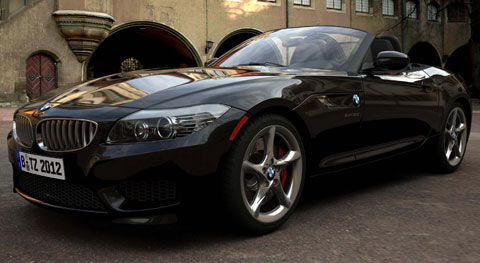
Nvidia says automotive manufacturers will be early adopters
Nvidia is getting serious about interactive, physically-based rendering, which it delivers through its GPU-accelerated rendering software Iray.
The big news coming out of Nvidia’s GTC conference today is that Iray will be made available for much wider range of 3D tools.
Rhino, Cinema 4D, Revit, Siemens NX, 3ds Max and Maya will all support Iray or Iray+ (developed by LightWork Design) this year through plug-ins or direct integration.
With Catia Live rendering, SolidWorks Industrial Designer, Bunkspeed Shot and Zoom and SketchUp already supporting the GPU ray tracer, the move will mean Nvidia will have a much wider set of customers to target for sales of powerful GPUs that are needed for the complex processing.
Physically-based materials will also be interchangeable across all of these apps thanks to support for Nvidia’s Material Definition Language (MDL). Nvidia says MDL is being supported by a growing number of companies who allow designers to create physically-based materials including Allegorithmic, Old Castle and X-Rite.

Iray is a “push-button” renderer designed for ease of use by designers, architects and engineers, rather than visualization specialists. Greg Estes, VP marketing at Nvidia, says Iray is basically like a camera. It understands the physics of the world. The latest 2015 release delivers much faster rendering performance, he adds.
Iray can run on CPUs but performance is far superior with Nvidia CUDA GPUs – Quadro, GeForce and Tesla.
Nvidia emphasises that Iray is highly scaleable. It can run on a laptop GPU, but for those serious about design visualization and need results back fast Nvidia says its new Quadro M6000 GPU is the optimal GPU for physically-based rendering.

Rendered on VCA by Catia with Iray
Multiple GPUs can be used in parallel, with up to three in a typical high-end workstation. The new Nvidia Quadro Visual Computing Appliance (VCA) builds on this, giving designers access to a shared, centralised rendering resource over LAN or in the cloud. The Linux box, which can be rack mounted, features eight Quadro M6000-class GPUs, 256GB RAM, a 2TB SSD, Infiniband and costs a cool $50,000.
VCAs are also scaelable. At GTC in San Jose, Dassault Systemes hooked up Catia Live rendering to 15 VCAs hosted at Nvidia’s Santa Clara offices. DS’s Pierre Maheut span a camera model into position and a split second after the mouse had stopped moving the image refined into a high-quality photorealistic render.

The Quadro VCA can host 8 Quadro M6000 GPUs

The Quadro VCA is highly scaleable
While this level of interactivity has the potential to completely transform design visualisation workflows, particularly for design review, $750,000 of rendering hardware is likely to be out of reach of most design and engineering firms. Nvidia is currently looking into a pay per use model for Quadro VCA clusters, where customers could tap into the powerful processing resources on demand over the Internet. It is still early days though and Nvidia did not share any details.
Quadro M6000
The Quadro M6000 is Nvidia’s new flagship professional graphics card for ultra-high-end 3D graphics and GPU rendering.
It features the same GPU as the consumer-focused Titan X but it is clocked down slightly to deliver 24/7 reliability, uses enterprise grade components on the board and has Quadro drivers that are optimised for professional 3D applications. Nvidia says users of Maya, in particular, will experience much better 3D performance with the Quadro M6000.
The dual height GPU is based on the Maxwell architecture (hence the M) and is a replacement for the Kepler-based Quadro K6000. It boasts 12GB GDDR5 memory and a colossal 7 TFLOPS of single precision performance. However, unlike the Quadro K6000 it doesn’t have strong double precision performance, which is important for simulation. This is down to the Maxwell architecture rather than a strategic positioning of the product.
The Quadro M6000 also has a new display engine that can drive up to four 4K-resolution displays natively @ 60Hz with 30-bit colour using DisplayPort 1.2.
The Quadro M6000 will retail for £3,739.

Quadro K1200
Nviida has also launched a new CAD-focused card, which offers an interesting proposition for users of Small Form Factor (SFF) workstations. The low profile card is designed specifically for compact workstations like the Dell Precision T1700 SFF, Lenovo ThinkStation P300 SFF or HP Z230 SFF.
With 4GB GDDR5 memory, 512 CUDA cores and support for up to 4 displays (via 4 mini DisplayPorts) it looks to be a significant upgrade from the Quadro K620 (2 GB DDR3 and 384 CUDA cores), which is currently a popular option in all of the aforementioned SFF workstations.
The Quadro K1200 will retail for £269.







